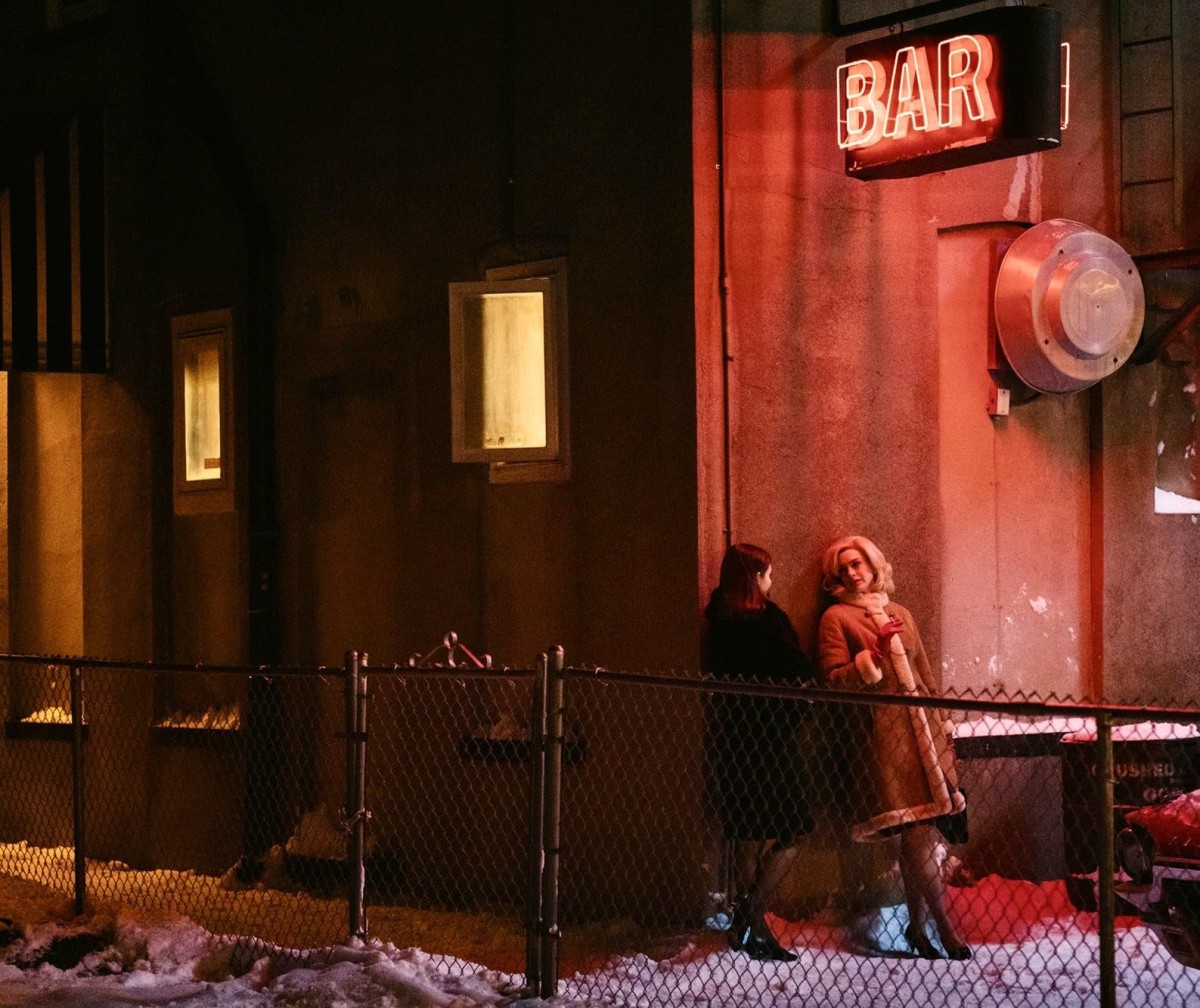Director William Oldroyd’s newest film feels as if it was a vintage VHS tape plucked out of the corner of an antique shop, evoking a cold environment of Christmases past. However, deeper, darker layers emerge. Infatuation, dread and suspense coexist in the nostalgic film “Eileen”, starring a timidly reserved Thomasin McKenzie as the titular character and Anne Hathaway as the enigmatic Rebecca Saint John. Stuck between caring for her alcoholic father and working as a secretary at a boy’s prison, Eileen’s unfulfilled life is turned upside down when Rebecca joins the prison’s staff as their psychologist, beginning an obsessive and consuming relationship.
The film is an adaptation of an eponymous novel by author Ottessa Moshfegh — who also co-wrote the film’s screenplay. Moshfegh has become an increasingly popular figure in contemporary fiction, as her other novel “My Year of Rest and Relaxation” became a cult favorite across social media and is also slated for a film adaptation. Moshfegh has a distinct style and literary voice based on eerie narratives of women in trouble internally and externally. This tone of the story translates seamlessly to the screen with the help of Richard Reed Parry’s spectral and haunting score. In visual style, the film transports the viewer back to the retro-crime dramas of the ’60s and ’70s. With its extended imagery of snowy Massachusetts and grainy film look, the film evokes a rustic noir feel. Crafted from the sterile and confined spaces of the prison along with the bleak small town lazily masked by Christmas lights, “Eileen” functions in its own atmosphere of tried-and-forced allure.
Eileen lives in a veil of repression, limiting herself to voyeuristic fantasies of different “what ifs,” flirting with the ideas of trysts with random prison guards or even shooting herself with her father’s gun, both harsh semblances of her trying to come to terms with her lonely life. Oldroyd weaves these compelling sequences throughout the film, making the audience question what is reality and what is not, leaving the truth until the last minute when a sudden and graphic gunshot jerks the narrative back to real life.
While the film succeeds in its ability to conjure mystery and suspense, McKenzie felt like a complete miscast. With her forced and inconsistent Massachusetts accent, the actress is unable to fully encapsulate the complex character of Eileen. At times, especially near the film’s end, McKenzie feels detached from the true nature of obsession that is at the center of the role. In comparison, Hathaway is oozing with charisma and a commanding screen presence. Whether this is an intentional choice made by Oldroyd, the dynamic between the young actor and the industry veteran creates an imbalanced, and at times jarring, dynamic.
Without any real functioning family, Eileen is left to her own devices — one reason why Rebecca’s welcoming advances of drinks and conversation lure her in. Power dynamics come into play and Rebecca’s influence transfers onto Eileen. She starts smoking cigarettes and drinking coffee and red wine, not only vying for her attention, but somewhat trying to become Rebecca herself. This offers an interesting crossroad in the evolution of Eileen’s loss of innocence, highlighting not only her naivete but malleability, which could be a partial response to the loss of her mother earlier in her life. While the film builds in darkness and mystery for most of its run time, its tone completely shifts in the third act, and the plot’s stakes immediately heighten as Rebecca reveals a sinister secret. This specific development disrupts the narrative’s expected trajectory, cementing the film as a thriller.
Parallels between the two women build to a point where both personalities seem to mesh, whether that be referencing each other with swapped names or dissolves that visually meld their faces together. I couldn’t help but think back to Ingmar Bergman’s classic genre-bending film “Persona.” Released in 1966, the film pioneered the meta-psychological thriller trope between female leads, inspiring other films like “Mulholland Drive” and even this year’s similar release, “May December.” After these sequences, the notion of each woman’s consciousness and identity becoming one is abandoned. The film moves on to focus more on the narrative concerning Eileen’s father and Lee Polk, a prisoner who killed his father, rather than exploring the developing relationship between the two women.
At times, I felt unsure what to think of the main relationship between Eileen and Rebecca. At some points, it hinges on full-fledged romantic obsession with the expectation that it would culminate in a physical manner, but the consuming passion fades away by the ending as the audience seeks answers. The resulting film offers a perplexing and enigmatic dynamic that either chooses to be intentionally vague, or is part of what seems to be a conflicted reading of the source material. Although these aspects ultimately add a layer of mystique to the film, it also seems like Oldroyd bit off more than he could chew.
Even with a flawed central performance and script, “Eileen” weaves a captivating tale of naivete-fueled delusion, illustrating that no one, not even in a small town in Massachusetts, can evade the grasp of vice. With her unique and off-kilter character developments, Moshfegh proves that her fiction translates to the screen well in an engrossing show of suspense.
“Eileen” is currently showing in select theaters.
Contact Maggie Turner at [email protected].

























































































































































